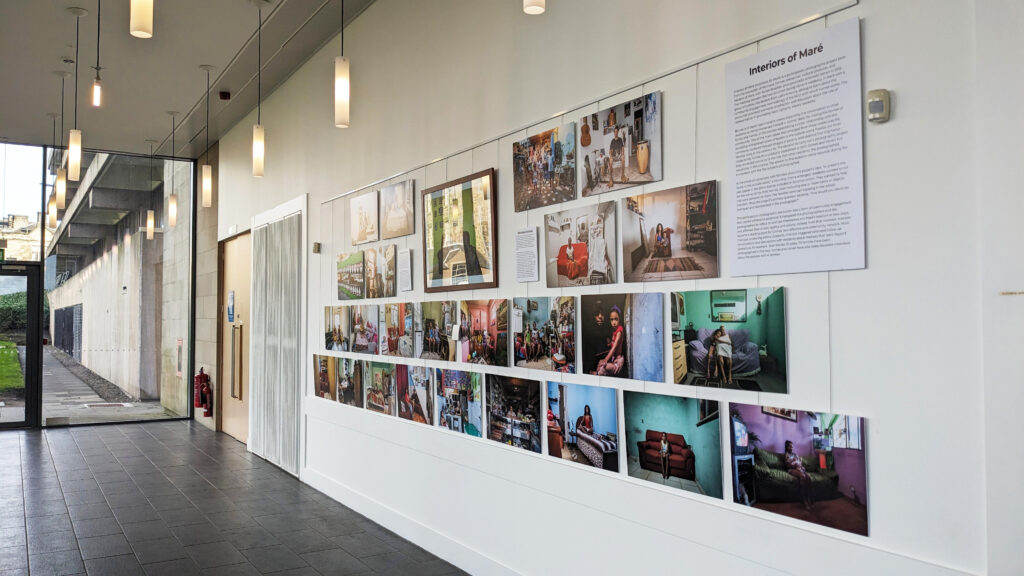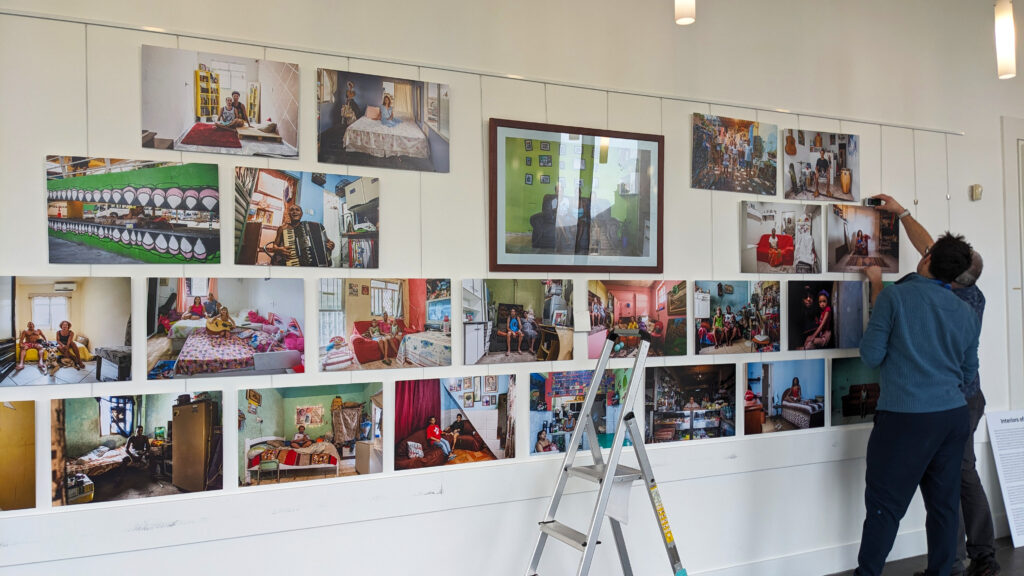Maré from the Inside is a series of visual projects produced with several collaborators, including Henrique Gomes, a cultural producer from Maré, Antonello Veneri, an Italian photojournalist, and Nadia Sussman, an American videographer.
An art exhibit curated by Nicholas Barnes, lecturer in the School of International Relations at the University of St Andrews, is currently on display in the foyer of the Arts Building in St Andrews. The exhibit includes photographs taken by Veneri with the guidance of Gomes working with Maré residents to sit for the portraits, many of which were friends and family of Gomes himself.

Maré is the largest complex of favelas, or neighbourhoods, in Rio de Janeiro. The word ‘favela’ is often translated to ‘slum’ or ‘shantytown,’ bringing with it negative implications to the area and its residents. Originating as small settlements in the early twentieth century, Maré has grown into sixteen neighbourhoods, with most houses made of brick with running water, electricity, and internet.
There are widespread stereotypes of the favelas being sites of deprivation and crime. Maré from the Inside challenges this perception, focusing on the people and communities within the favelas and their creativity and strength.
Barnes, who spent eighteen months living in Maré, has focused his research on life in the favelas, telling the stories of the residents and giving them a voice. Barnes states that ‘favelas constitute an extraordinarily diverse set of communities,’ and that these communities also ‘sustain vital political and social movements while playing a significant role in the city and nation by advocating for the basic human rights of all of Brazil’s citizens.’ [1]

The photographs in the exhibit curated by Barnes explore vibrant and diverse cultures, families and urban identities whilst combatting prejudices associated with the favelas.
The photographs on display are family portraits that capture the variety of family structures inside Maré. The intimate portraits of the residents in their homes shows the closeness of the families and the connections between the residents.
Many of the photographs use the composition of the interior walls to pull the viewer’s eye towards the centre of the image and the subjects themselves. We used the hanging system in the foyer to mimic this, creating a dynamic display that brings focus inwards towards each print.

The portraits contain objects that are important to the subjects, such as boxing gloves, instruments, and religious symbols. The sitters often took their own initiative to include these objects to show what was significant to them and their lives in Maré, the artists giving them control over how they are perceived.
The photographs show the character and resilience of the residents of Maré; far from being temporary occupants, they have made their homes in the favelas, resisting stereotypes to build a community full of creativity and diversity.
Exhibited internationally and included in last year’s Edinburgh Fringe, Maré from the Inside is now on display in the Arts Foyer with further displays throughout the Arts Building at University of St Andrews until the end of summer 2024.
Read more about the project here – https://cpcs.wp.st-andrews.ac.uk/research/mare-from-the-inside/
Post written by Lydia Heeley, Assistant Curator, Photographic Collections and Digitisation Officer at the University of St Andrews Libraries & Museums.
[1] Barnes (2021) p.18 in Barnes, N., Poets, D., & Stephenson Jr., M. (eds.) (2021). Maré from the inside: art, culture, and politics in Rio de Janeiro, Brazil. Virginia Tech Publishing. https://doi.org/10.21061/mare (Open Access)